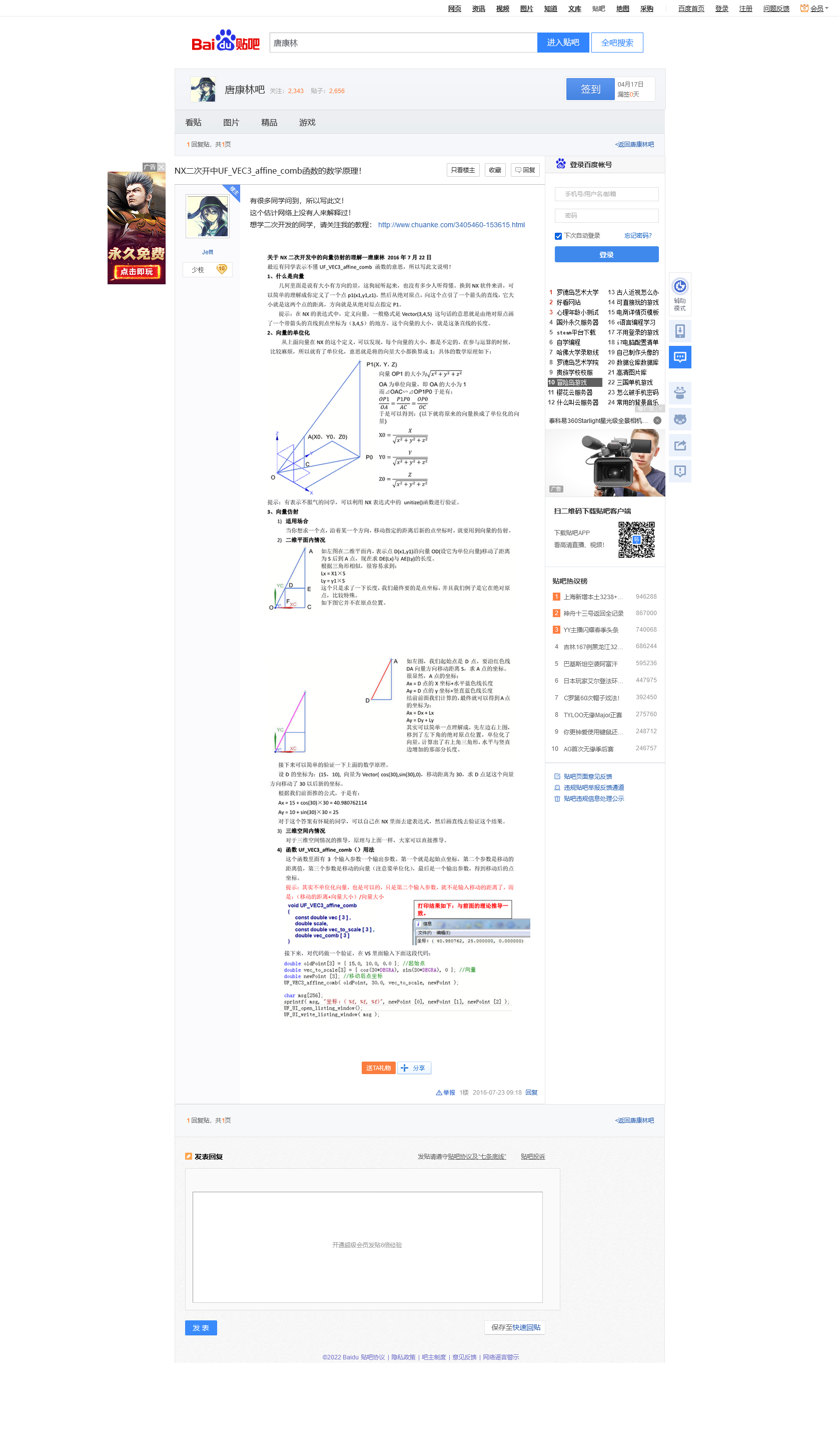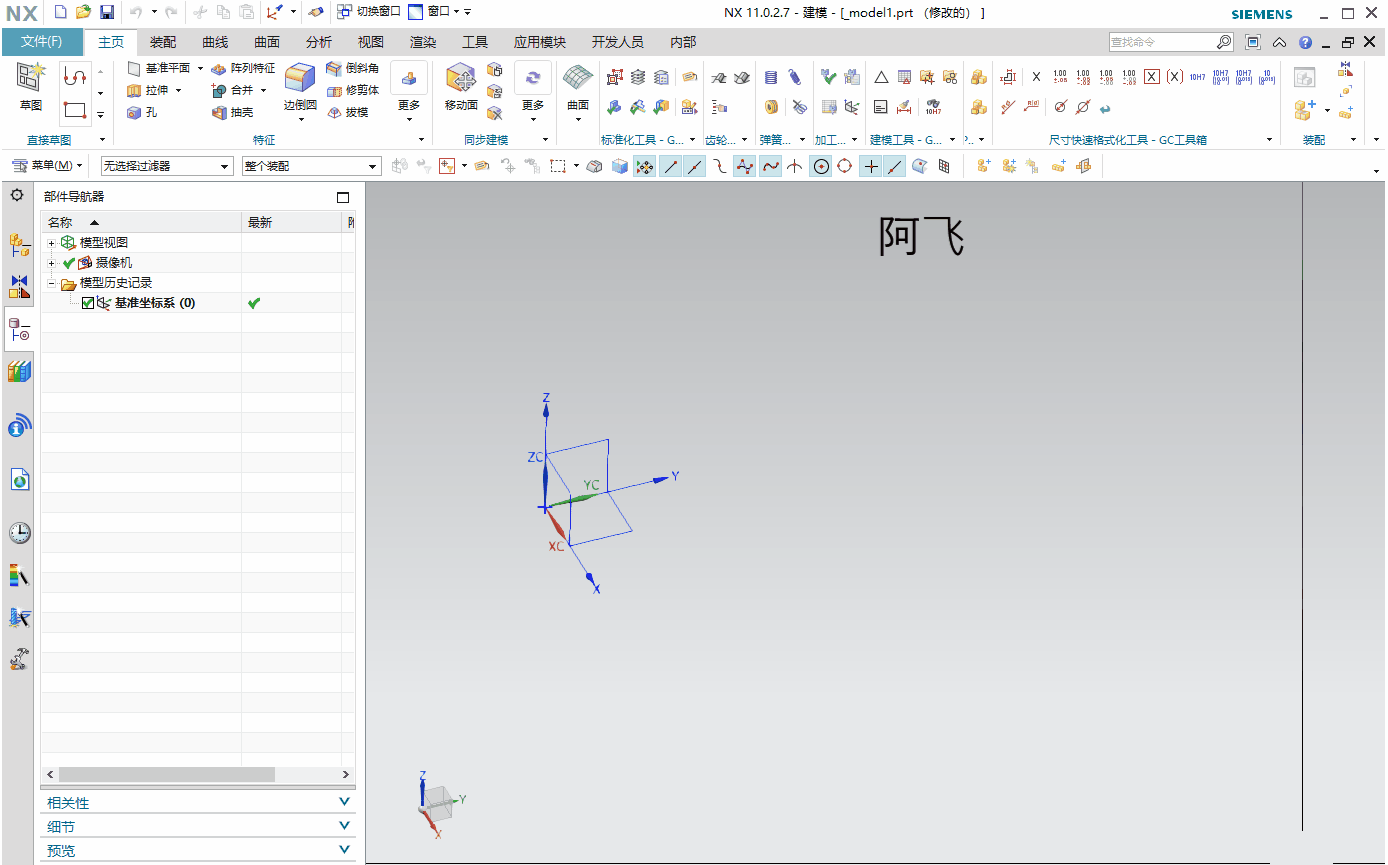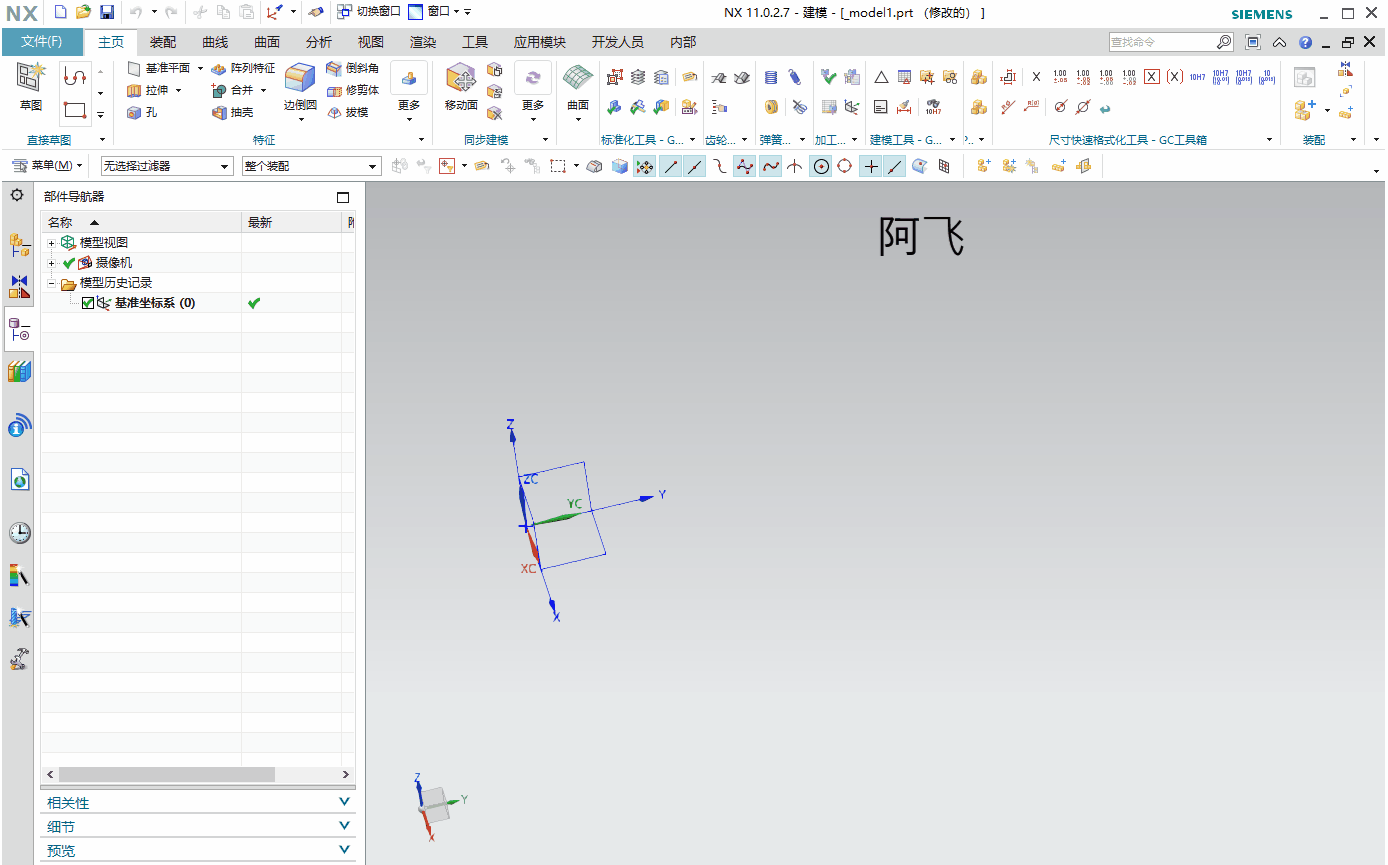- 文章讨论主题
昨天有位朋友问我,已知一个点,距离,矢量方向,怎样求出另外个点的坐标?
- 方法1
使用UF函数UF_CSYS_map_point进行坐标系转换
代码
NX11+VS2013 #include <uf.h> #include <uf_ui.h> #include <uf_csys.h> #include <uf_mtx.h> #include <uf_curve.h> #include <uf_vec.h> UF_initialize(); //获取WCS标识 tag_t WcsId = NULL_TAG; UF_CSYS_ask_wcs(&WcsId); //向量 double Vec[3] = { cos(30 * DEGRA), sin(30 * DEGRA), 0 }; //3*3矩阵,输入Z向量,得到矩阵 double Mtx[9]; UF_MTX3_initialize_z(Vec, Mtx); //创建矩阵 tag_t MatrixTag = NULL_TAG; UF_CSYS_create_matrix(Mtx, &MatrixTag); //创建临时坐标系 double P1[3] = { 15.0, 10.0, 0.0 };//起始点 tag_t CsysTag = NULL_TAG; UF_CSYS_create_temp_csys(P1, MatrixTag, &CsysTag); //设置WCS UF_CSYS_set_wcs(CsysTag); double distance = 30.0;//移动的距离 double P2[3] = { 0, 0, distance };//这里要注意,转换前的点是从0,0,0开始加distance的,不是从P1开始去加distance //从当前工作坐标系转换到绝对坐标系 int InputCsys = UF_CSYS_ROOT_WCS_COORDS; int OutputCsys = UF_CSYS_ROOT_COORDS; double OutputPoint[3];//移动后点坐标 UF_CSYS_map_point(InputCsys, P2, OutputCsys, OutputPoint); //创建直线 UF_CURVE_line_t LineCoods; LineCoods.start_point[0] = P1[0]; LineCoods.start_point[1] = P1[1]; LineCoods.start_point[2] = P1[2]; LineCoods.end_point[0] = OutputPoint[0]; LineCoods.end_point[1] = OutputPoint[1]; LineCoods.end_point[2] = OutputPoint[2]; tag_t LineTag = NULL_TAG; UF_CURVE_create_line(&LineCoods, &LineTag); char msg[256]; sprintf(msg, "坐标:( %f, %f, %f)", OutputPoint[0], OutputPoint[1], OutputPoint[2]); UF_UI_open_listing_window(); UF_UI_write_listing_window(msg); //设置WCS UF_CSYS_set_wcs(WcsId); UF_terminate(); 阿飞 2022年4月17日
演示

- 方法2
使用UF函数UF_VEC3_affine_comb
转载自唐工的这篇 NX二次开中UF_VEC3_affine_comb函数的数学原理!

代码
NX11+VS2013 #include <uf.h> #include <uf_ui.h> #include <uf_csys.h> #include <uf_mtx.h> #include <uf_curve.h> #include <uf_vec.h> UF_initialize(); //方法2 函数 UF_VEC3_affine_comb double oldPoint[3] = { 15.0, 10.0, 0.0 }; double vec_to_scale[3] = { cos(30 * DEGRA), sin(30 * DEGRA), 0 };//向量方向 double newPoint[3];//移动后点坐标 UF_VEC3_affine_comb(oldPoint, 30.0, vec_to_scale, newPoint); //创建直线 UF_CURVE_line_t LineCoods; LineCoods.start_point[0] = oldPoint[0]; LineCoods.start_point[1] = oldPoint[1]; LineCoods.start_point[2] = oldPoint[2]; LineCoods.end_point[0] = newPoint[0]; LineCoods.end_point[1] = newPoint[1]; LineCoods.end_point[2] = newPoint[2]; tag_t LineTag = NULL_TAG; UF_CURVE_create_line(&LineCoods, &LineTag); char msg[256]; sprintf(msg, "坐标:( %f, %f, %f)", newPoint[0], newPoint[1], newPoint[2]); UF_UI_open_listing_window(); UF_UI_write_listing_window(msg); UF_terminate();
演示

- 方法3
使用数学方法计算
数学方法是我的开发老师苏工告诉我的。
已知一个点,距离,矢量方向,怎样求出另外个点的坐标?
这个是基本的数学几何运算,自己写一个函数就可以。
就是一个点沿着一个矢量方向移动一段距离
就是点的xyz坐标分别+对应矢量*距离
比如点1(0,0,0)沿矢向(0,0,1)移动5得到的坐标就是(0,0,5)
x=0+0*5
y=0+0*5
z=0+1*5=5
前提向量要是单位矢量,长度为1
矢量的x*x+y*y+z*z = 1
代码
NX11+VS2013 #include <uf.h> #include <uf_ui.h> #include <uf_csys.h> #include <uf_mtx.h> #include <uf_curve.h> #include <uf_vec.h> UF_initialize(); //方法3 数学计算 double distance = 30.0;//移动的距离 double oldPoint[3] = { 15.0, 10.0, 0.0 };//起始点 double vec_to_scale[3] = { cos(30 * DEGRA), sin(30 * DEGRA), 0 };//向量方向 double newPoint[3];//移动后点坐标 newPoint[0] = oldPoint[0] + vec_to_scale[0] * distance; newPoint[1] = oldPoint[1] + vec_to_scale[1] * distance; newPoint[2] = oldPoint[2] + vec_to_scale[2] * distance; //创建直线 UF_CURVE_line_t LineCoods; LineCoods.start_point[0] = oldPoint[0]; LineCoods.start_point[1] = oldPoint[1]; LineCoods.start_point[2] = oldPoint[2]; LineCoods.end_point[0] = newPoint[0]; LineCoods.end_point[1] = newPoint[1]; LineCoods.end_point[2] = newPoint[2]; tag_t LineTag = NULL_TAG; UF_CURVE_create_line(&LineCoods, &LineTag); char msg[256]; sprintf(msg, "坐标:( %f, %f, %f)", newPoint[0], newPoint[1], newPoint[2]); UF_UI_open_listing_window(); UF_UI_write_listing_window(msg); UF_terminate(); 阿飞 2022年4月17日
演示

阿飞
2022年4月17日